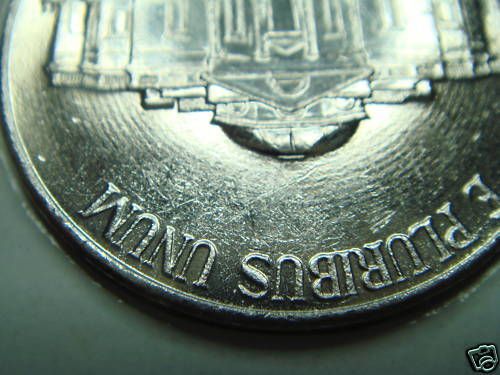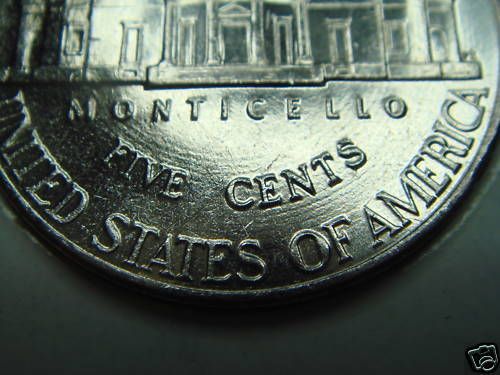-
When you click on links to various merchants on this site and make a purchase, this can result in this site earning a commission. Affiliate programs and affiliations include, but are not limited to, the eBay Partner Network.
-
Posts
24,958 -
Joined
-
Last visited
-
Days Won
23
Content Type
Profiles
Forums
NGC Journals
Gallery
Events
Store
Downloads
Posts posted by WoodenJefferson
-
-
I can tell you this, had a dealer or collector presented me with this encapsulated matte proof '09 VDB, I would have admired it and said, "Gee, nice coin!" (because your supposed to TRUST the TPG's decision)
What a roller coaster this one has been.
-
...so, when do we get a bean on top of a bean to signify that the original bean was the right bean?
-
- Popular Post
Pros & cons on this subject, if your buying, they are priced too high, if your selling, the price is just about right.
To bean or not to bean, that is the question?
-
A sound business model.
-
...is this the monthly D.Carr thread where the topic is foisted upon us to keep the fuel fed to the fires so we don't forget?
-
...the explanation is getting there, meaning I am less skeptical about how the mystery concentric lines end up on struck coins.
-
There has to be some dynamics here that we do not fully understand or are missing vital information as to what causes this anomaly on modern coinage.
I can fully understand the Conder Tokens as rudimentary equipment was used to produce these tokens, but modern day techniques and state of the art equipment should render near perfect coinage...something is amiss.
-
I'll add another contribution to the discussion in that I think using the term "blow" is improper with regard to the hubbing process of die making as hubs are actually "pressed" into the Master Die surfaces. Often referred to as a "squeeze" instead of a "strike" (blow).
The correct words help folks to better visualize the die making process.
BTW, here's an image of a nickel I pulled off of eBay:


Why do these lines remind me of 'seismic waves'? Or a stone thrown into the water where the waves radiate outward in a concentric circle?
-
Question: When did the Denver Mint start 'single squeezing' their own dies?
Also, check out this informative web page, pretty much covers die making processes from start to finish.
-
Good article, congrats to the finders and to the confirmers!
Had to look this word up> paucity
-
Immortality!
Way to go!
-
Revelation news that a second coin is now being found.
-
Can you imagine just how many of those were melted?
-
It would be nice to be immortalized as the finder of a discovery piece.
Good luck!
-
The Philadelphia Mint was still striking proof coin sets (flat packs) in 1964. The Special Mint Sets (SMS) were not started until 1965 thru 1967 then back to the proof coinage in 1968 from the San Fransisco Mint.
Despite what you wrote above, there are a number of 1964 coins designated as SMS. And their appearance is markedly different from either Proofs or typical business strikes.
In my defense, none of the 1964 "prototype" Specimen coins that were struck were available to the public as a SMS sets, or even as individual coins, unless of course you were Eva Adams or LBJ
I'm more comfortable with a Specimen designation than I am SMS...I have been looking for any of the raw denominations for years. They say when you see one, you will know it.
-
The Philadelphia Mint was still striking proof coin sets (flat packs) in 1964. The Special Mint Sets (SMS) were not started until 1965 thru 1967 then back to the proof coinage in 1968 from the San Fransisco Mint.
-
99.99% of posters responding to Billy Crawford finding one, had to eat a lot of crow!
Good luck.
-
You are incorrect about the $600 grading fee...that fee is charged for known ultra rarities which you do not know you have yet, in fact can never be, because I do not think it is in the same circle as say a 1913 Liberty nickel or even a 1804 silver dollar.
I say just for the record, that I think most of this story is BS, unless you have definite proof, but til then I remain skeptical.
Stranger things have happened, but when they do, the people claiming offer proof, I have seen none.
I do not like my leg pulled
-
can someone here help me on this 1921-D peace dollar, cannot find any info or pics on the one I have, ok thanks
There were NO Peace dollars minted in Denver (D) in 1921, they all came from Philadelphia which did not have mint marks.
Now, there were 1921 P D & S Morgan silver dollars from that year, perhaps it's a Morgan.
-
Your image failed to appear. There are a few threads about posting images, try again.
-
You also have to remember that once a coin starts a change before being encapsulated, that change is slowed down but not completely halted, so you may see actual change after encapsulation. It's the nature of the beast.
The only way would be to encapsulate a pristine example in a chamber utilizing a inert gas. Even then, after time, the encapsulated inert gas will leach out and exchange with the ambient air, but you'll probably be dead by then so it's the next owners problem.
-
So, since I know squat about this cent, is there a numismatic value attached to this coin.
-
How do you know this to be true?
What are you looking at that looks different than the other 6 billion.
-
The lightly canceled dies resurfaced in 1961, pretty convenient for the Civil War Centennial in 1961. The obverse die appears to have been defaced with a hammer and the reverse with what looks like a chisel. Usable transfer dies were made from the originals and 30,000 examples of various types of medals were struck.
I would guess these would be considered the “second re-strike” since the first re-strike was done in 1874.
I never even thought about buying one when they were dirt cheap…they are cool. Keep it raw!




PCGS' major grading error
in US, World, and Ancient Coins
Posted
Question? If this was purely a mechanical error (printing wrong information on the insert label) how did this 1909 V.D.B. mislabeled as a matte proof show up on 'Coin Facts" as a proof specimen?